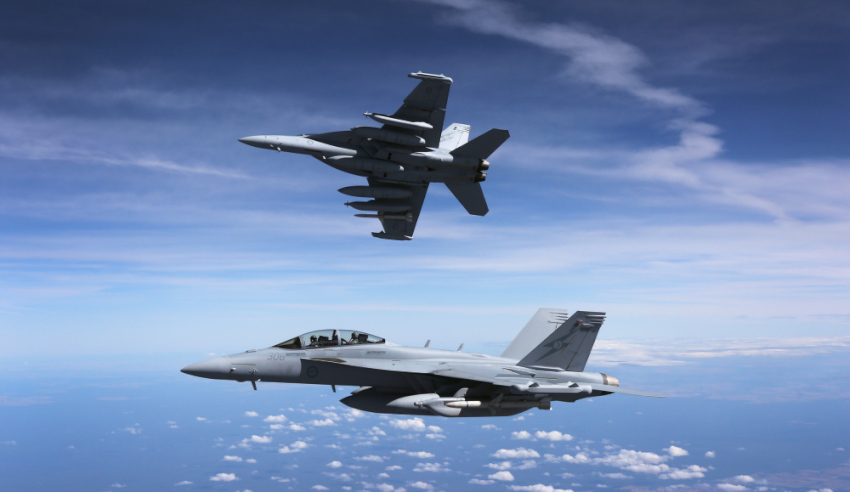Raytheon Intelligence & Space’s Next Generation Jammer Mid-Band has flown on an EA-18G Growler – its first flight test on a US Navy aircraft as the program continues to progress through the development phase.
To continue reading the rest of this article, please log in.
Create free account to get unlimited news articles and more!
The US Navy's NGJ-MB is an advanced electronic attack system that denies, disrupts and degrades enemy technology, including communication tools and air-defence systems.
The first flight took place on 7 August 2020 at the Naval Air Station Patuxent River, Maryland, meeting all objectives. Future mission systems flight testing will demonstrate weapons system control, power generation, and electromagnetic compatibility between jammer and aircraft, as well as the performance of NGJ-MB's high-capacity digital waveform generation and active electronically scanned arrays in flight against a variety of targets. Data from these flight tests on the Growler will inform Milestone C – the Navy's decision to start NGJ-MB production.
Annabel Flores, vice president of electronic warfare systems for RI&S, said, “After hundreds of hours of successful ground and chamber testing, NGJ-MB's first Growler flight test marked a significant achievement for the program toward Milestone C and IOC.”
The flight follows more than 600 hours of ground testing of Engineering Development Model, or EDM, pods. At the Naval Air Stations Patuxent River and at Point Mugu, California, EDM pods underwent anechoic chamber testing – a special facility designed to absorb electromagnetic waves – to measure the jammer's radio frequency power and beam-steering capabilities.
“It's a testament to the technology and the collaborative efforts of the RI&S team with the Navy's engineering, integration and test teams,” Flores added.
In addition to mission systems testing, the program is expected to begin aeromechanical flight testing shortly to assess aircraft flying qualities and performance, following previously completed ground vibration, static load and wind tunnel testing.
These tests will also evaluate the effects of the air flow environment on the pod, as well as noise and vibration behaviour.
To date, RI&S has delivered 10 EDM pods: six mission systems pods and four aeromechanical pods. A total of 28 pods will be delivered under the EMD contract.
Based on F/A-18E/F Super Hornet variant of the wildly successful Boeing Hornet, the EA-18G Growler has proven itself to be an invaluable asset to the US when deployed overseas.
The Growler incorporates a number of advancements over the traditional Super Hornet, including:
- An additional avionics suite;
- Enhanced radio frequency receivers;
- An improved communications suite; and
- ALQ radio-frequency jamming pods, which enable it to jam enemy systems.
Australia's fleet of 11 EA-18G Growlers will be based at RAAF Base Amberley and operate in conjunction with the air, land and sea forces.
Initially purchased alongside the more traditional Super Hornet variants to supplement Australia's ageing fleet of classic Hornets and the diminished strike capability following the retirement of the F-111s, prior to the full integration of the Air Force's 72 planned F-35s, IOC is expected to be delivered to the RAAF in the coming months.
Australia's Growlers were part of a larger US Navy buy of 44 Super Hornets and Growlers in July 2014, with the first Australian EA-18G making its first flight in July 2015.
Stephen Kuper
Steve has an extensive career across government, defence industry and advocacy, having previously worked for cabinet ministers at both Federal and State levels.

 Login
Login








